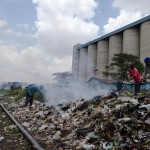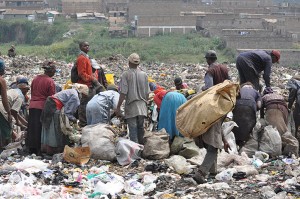Barefoot army behind NGO’s award-winning research on city slums | Source: Mumbai Mirror | Oct 11, 2012
PUKAR’s team of Barefoot Researchers from the very slums they are helping to improve
Anita Patil-Deshmukh was felicitated by her alma mater, the Harvard School of Public Health, last week as ‘public health innovator of the year’ for her work in a slum on Mumbai’s eastern waterfront.
But to understand the true impact of her work, you’ll have to meet Baliram Boomkar and Shakira Mulla.
Patil-Deshmukh, executive director of research initiative PUKAR (Partners for Urban Knowledge Action and Research), and Mulla and Boomkar, its Barefoot Researchers, are part of a tireless army that makes the organisation’s work possible.
PUKAR works to offer a better standard of living to inhabitants of slums locked within the city’s crevices. Tapping into youth from these communities, it empowers them to spread awareness and collect data that can be collated and then presented to authorities who hold the power to bring about change.
It was innovation in data collection, research and reaching out to the population that won Patil-Deshmukh the award. “Other researchers,” she says, “paratroop into a community. The quality of their information remains superficial. We found that involving locals empowers them. The idea of doing something for themselves is the best motivation.”
“Besides, the information they collect has a granularity which you and I could never land. They can talk to neighbours, gather and reassure them. Thirdly, it creates a wider and more personal reach for follow-up. We can create medical cards and set up appointments, but the Barefoot Researchers can remind the slum-dwellers personally and follow up their visits.”
The advantage that PUKAR gains is small compared to what the Barefoot Researchers reap. The workforce includes people from the immediate surroundings of the slum, and these interactions improve their sense of dignity. “And somehow these children are mainstreamed,” adds Anita.
Boomkar, only 19, has worked with Pukar for three years, while Mulla has been with them for two. Boomkar rattles off the projects he’s worked on: diarrhoea awareness, collecting biometric data, mental health surveys and immunisation.
According to him, tensions about the uncertainty over water, disease and toilets are the main reasons for the rise in mental health issues. Shakira works at Raghuleela Mall in Vashi during the week and Bali is doing his SYBCom from Siddharth College at Fort.
[click to continue…]







